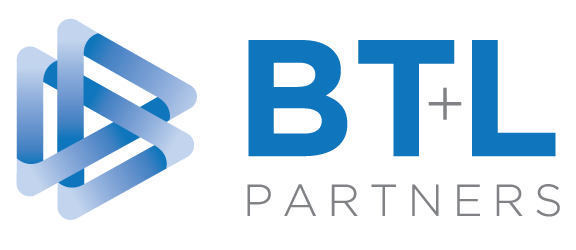06 Nov US Elections and M&A – Emotional Leader Legacies in Transitions
Today the world is witnessing a nail biter U.S. Presidential election and a political spectacle. Emotions, ego and pride are fragile and stressed during significant and defining changes for leaders and their legacies. I see yet another striking parallel between changes in political office, with transitions for founder/owners/CEOs of acquired firms through the course of merging or integrating their organization with a buyer. This article highlights the challenges associated with transitioning executive leadership, especially deeply seated and attached leaders, through the course of M&A due diligence and post day one integration efforts.
 As with a previous post a few days ago related to U.S. elections and transformation leadership, I must acknowledge the differences. With Presidential elections, there is not a succession process that allows for the executive to groom and plan who their successor is, the citizens of the U.S. ultimately determine this. The elections are not equal to a buyer/seller scenario, elections are an all or nothing determination, with no question about a transition of power and handoff process with timing. In mutual M&A agreements, there is a negotiation and agreement between the buyers and sellers, which assumes a willingness and mutual gain in the end. Regardless, the parallels to a leader’s transition in M&A scenarios can be impressively similar.
As with a previous post a few days ago related to U.S. elections and transformation leadership, I must acknowledge the differences. With Presidential elections, there is not a succession process that allows for the executive to groom and plan who their successor is, the citizens of the U.S. ultimately determine this. The elections are not equal to a buyer/seller scenario, elections are an all or nothing determination, with no question about a transition of power and handoff process with timing. In mutual M&A agreements, there is a negotiation and agreement between the buyers and sellers, which assumes a willingness and mutual gain in the end. Regardless, the parallels to a leader’s transition in M&A scenarios can be impressively similar.
This article is party neutral, it’s not about the 2020 incumbent or final President elect. This parallel is relevant at the conclusion of any election where a change of leadership may occur.
I’ve been intimately involved with many executive transitions through my career, many in the M&A space. I’ve been called on by clients on a number of occasions to intervene to address and improve how the respective leaders were working together to orchestrate and execute, in an aligned and authentic way, a successful and positive integration. I’ve gained a number of insights and perspectives as a result of these experiences, with too many variations to share expand on here. The following represents some top-level perspectives that we encourage acquirers/buyers to proactively assess early in due diligence and plan for in the deal terms and leadership/integration approach.
When we assess leadership of a target, we consider the extent to which they can and will tolerate and support the merger and integration. We have found there are three intertwined factors that will drive their tolerance, acceptance or resistance to the terms of a deal, and more importantly, the extent of their collaboration or resistance to integration. Although these leaders enter into agreements with the best of intentions, these factors often overcome their logic and commitments; behavior and character traits run deep and long.
1 – Professional journey to position of CEO and resulting perspective – Founder owner, 2nd/3rd generation family, internally promoted career leader, externally recruited CEO, professional CEOs with multi-company experience, and those with public traded and direct M&A leadership experience. A continuum that provides insight into the extent to which they will be highly and emotionally attached to their legacy organization or objective, aligned and engaged in achieving merger/deal results in combined organizations.
2- Extent to which the executive is high ego, who’s own internal confidence and security is driven by what’s they have done to make the company what it is. This high ego strength may be reflected through self-promotion, bragging or self-proclamations about their success and their leadership as essential to the organization’s success. They may doubt the organization’s success going on without them.
3- High pride and personal identity tied to the organization, high levels of loyalty and attachment to the brand, customers, and employees. They have deep passion and love for the business, industry and people. May have created a family environment and a place where employees see the company and the leader as one. This organization is “their baby”!
As you can imagine, all three factors will result in different challenges, different terms, and ultimately adapted approaches to Day One and the integration path. In our experience, founder/owner targets can be the most difficult to gain strong supportive partnership through the deal and integration.
We often see in the deal/transaction phase, a focus on contracts, rich incentives, earnout/payout schemes, that are based on some variety performance or time-based hurdles. We have experienced, depending on where these executives fall on the three dimensions previously described, a real and significant struggle to keep the executive aligned and supportive of the buyer’s path to success. Pride, ego and identity to the legacy organization can be a very powerful factor in determining the deal terms and integration path forward. We’ve seen, even with quick separations, with strong legal and financial terms, a struggle for the executive to not take calls from their former leaders and employees, in many cases the executive has life-long dear friends that are actively part of the merger. The conversations are largely not in support of the acquirer and the planned integration path. A strong connection to their “base” and strong outspoken opinions of these leaders have a very strong and influential impact on the outcomes of the integration.
As we are experiencing in the U.S., we can see that any incumbent President is going to want to protect and strengthen their legacy, and influence their place in the history books. We all have experienced rejection in our lives, and times when we felt something important, core to who we are, being taken away from us. Founders, Owners and CEO’s of acquired firms have the same hopes, desires and concerns on a number of levels. The challenge for acquirers is to have a deep understanding, appreciation, dialogue and plan for these executives that respects the leader’s role and legacy, with a prudent and thoughtful leadership transition plan.
Let’s continue the conversation! What have others experienced, what are some best practices, how does our 2020 Covid environment affect or challenge how we approach and manage these scenarios? We continue to be on a mission to address the 70-90% failure rates, please join me on this mission and journey.



